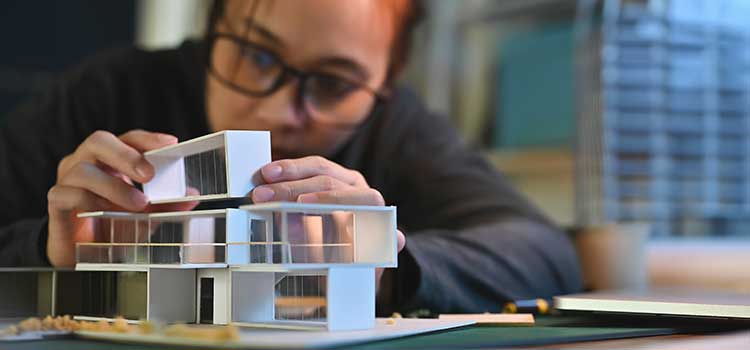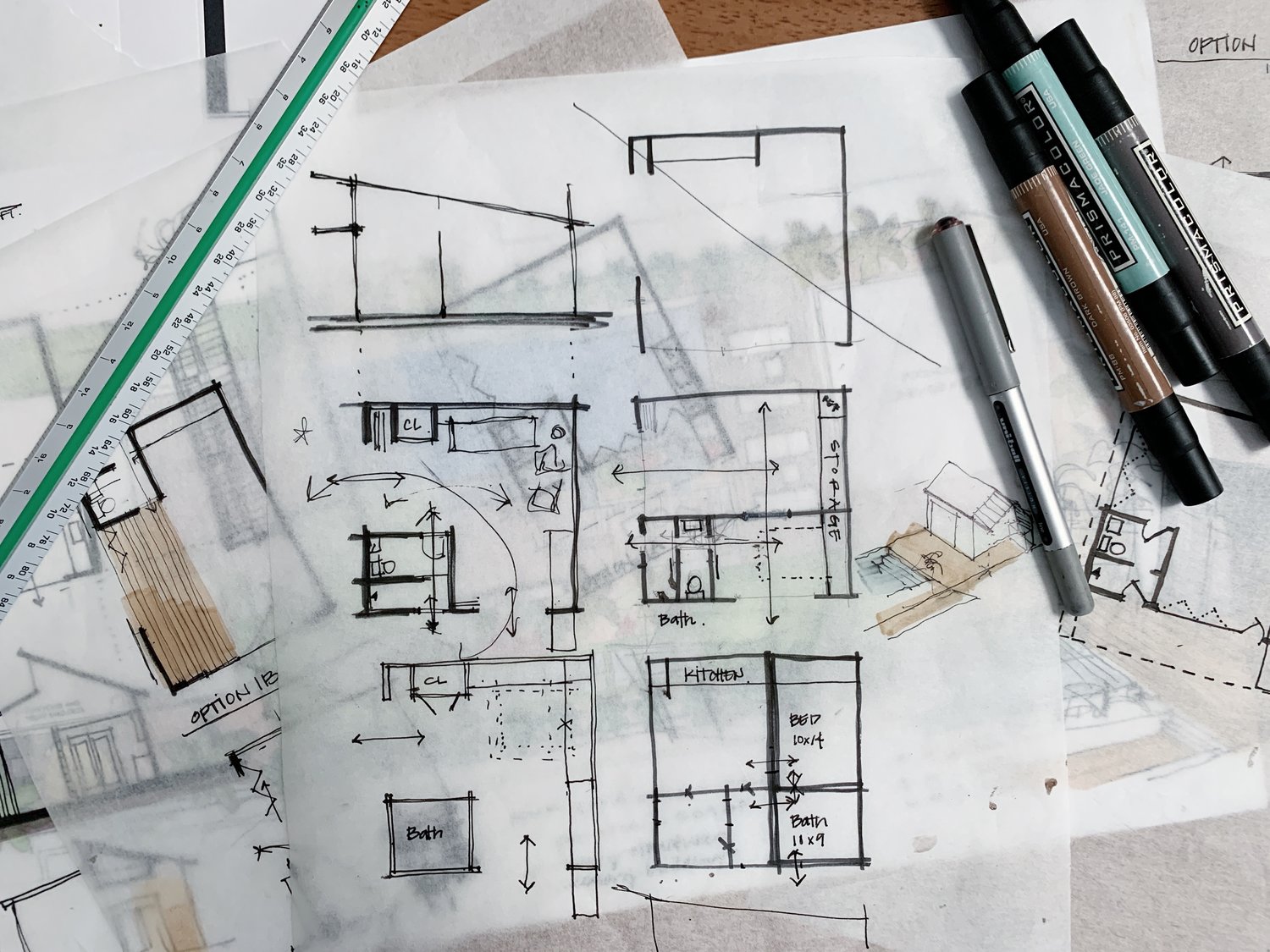Understanding the Diverse Career Paths Available for Aspiring Architect
As an aspiring Architect, you have a globe of career courses waiting for you. Each course offers distinct challenges and possibilities to apply your creative thinking and technical knowledge. Whether you're attracted to typical architecture or the nuances of lasting layout, there's a niche that straightens with your interests. Comprehending these varied choices can shape your specialist trip, but which direction will you choose to explore initially?
Typical Design: Designing Structures and buildings
Typical design focuses on creating structures and frameworks that blend capability with visual charm. Your designs can reflect cultural heritage, showcasing regional customs while satisfying contemporary needs.
You'll create skills in composing, model-making, and website analysis, enabling you to picture and connect your concepts successfully. Involving with clients, you'll require to understand their vision and translate it right into viable designs.
Furthermore, building codes and sustainability methods are vital in your work, guaranteeing your structures are environmentally friendly and safe. As you expand in your job, you'll discover chances in residential, commercial, and even restoration jobs, each offering special challenges. Accepting typical design leads the way for a satisfying career that admires the past while forming the future.
Urban Planning: Forming Communities and Public Spaces
As an aspiring Architect, you can play a crucial duty as a city planner, changing how areas work and engage. By employing neighborhood involvement methods, you'll assure that homeowners have a voice fit their atmosphere. And also, incorporating lasting layout principles will certainly assist create rooms that not only fulfill today's requirements however likewise shield the future.
Role of Urban Planners
While several could assume of architects as the single dreamers behind buildings, city organizers play an important duty in forming the more comprehensive landscape of neighborhoods and public areas. By working together with different stakeholders, you'll aid create parks, transport systems, and residential locations that promote social communication and ease of access. Your experience in spatial layout and neighborhood dynamics allows you to imagine future development while preserving cultural heritage.
Area Involvement Techniques
Reliable area involvement techniques are crucial for urban planners to assure that the voices of locals are heard and valued in the planning procedure. To cultivate meaningful discussion, you ought to prioritize open forums and workshops where area members can express their concepts and problems. Usage studies and social media sites to reach a broader audience, guaranteeing diverse point of views are consisted of. Teaming up with local companies can improve depend on and promote much deeper links. It's vital to provide clear info regarding proposed tasks and decision-making procedures, allowing locals to feel enlightened and encouraged. By actively including and paying attention comments, you'll produce spaces that mirror the community's needs, ultimately leading to even more sustainable and successful city atmospheres. Welcome transparency and continuous dialogue for long lasting impact.
Lasting Design Principles
When developing metropolitan spaces, including lasting style principles is important for producing environments that prosper both ecologically and socially. Take into consideration integrating eco-friendly spaces, like yards and parks, to boost biodiversity and improve air high quality.
Designing with water preservation in mind is additionally vital-- think of rain gardens and permeable surfaces to handle stormwater. Involving neighborhood participants during the preparation procedure warranties that the rooms you create fulfill their needs and urge social interaction. By embracing these principles, you'll add to lively, lasting metropolitan landscapes that benefit everyone.

Landscape Design: Developing Sustainable Outdoor Settings
As you discover landscape style, you'll discover essential layout principles that develop practical and lovely outside spaces. Sustainable techniques play a crucial duty in making sure these environments thrive while decreasing ecological influence. Plus, you'll discover a variety of job chances that permit you to make an actual difference in just how individuals interact with nature.
Style Principles in Landscape
Comprehending design concepts in landscape architecture is crucial for producing sustainable outside atmospheres that integrate with nature. You'll require to ponder aspects like percentage, equilibrium, and scale to guarantee your designs feel natural and welcoming. Furthermore, pay attention to seasonal changes, creating with products that match the environments year-round.
Lasting Practices Summary
Sustainable practices in landscape architecture not just concentrate on visual appeals yet also focus on environmental health and source preservation. You can develop areas that advertise look these up soil health, such as utilizing natural materials and exercising permaculture concepts. Ultimately, these methods assure your layouts profit both people and the setting for years to come.
Career Opportunities Expedition
With a strong structure in lasting practices, landscape style supplies a variety of job paths that allow you to make a meaningful effect on the environment. You can work as a landscape developer, producing aesthetically pleasing and useful exterior areas, or specialize in eco-friendly restoration, assisting to restore broken ecosystems. Urban planners frequently team up with landscape engineers click resources to develop eco-friendly spaces in city setups, boosting city livability. If you're enthusiastic about education, take into consideration coming to be a landscape architecture educator, inspiring future generations. Furthermore, you could work with nonprofits concentrated on ecological sustainability or involve in study to introduce brand-new practices. Each course not just forms stunning environments however additionally promotes a much healthier earth for future generations.
Sustainable Design: Concentrating On Eco-Friendly Practices
As you explore your occupation in style, welcoming environment-friendly practices can establish you apart in an affordable area. Sustainable style focuses on creating buildings that decrease ecological impact while boosting passenger well-being. By integrating eco-friendly products, energy-efficient systems, and lasting building techniques, you'll add to a greener future.
Start by gaining knowledge of eco-friendly qualifications like LEED or BREEAM, which can reinforce your qualifications. Take into consideration how natural light, ventilation, and thermal performance can enhance style. Team up with designers and ecological experts to innovate remedies that reduce waste and conserve resources.
Don't fail to remember the importance of community involvement-- appealing regional stakeholders can influence designs that balance with the atmosphere. As customers significantly prioritize sustainability, your know-how in eco-friendly methods will certainly not only draw in tasks yet additionally satisfy your enthusiasm for liable architecture. Embrace this essential aspect of the career, and enjoy your occupation grow.
Historic Conservation: Safeguarding and Bring Back Social Heritage
While you begin on your building journey, think about the vital function of historical conservation in keeping our cultural heritage. This area concentrates on the security and remediation of considerable buildings, sites, and frameworks that tell the stories of our past. By taking part in historical preservation, you'll help protect the architectural heritage that forms neighborhood identity.
As a historical preservation Architect, you'll assess historic significance and analyze the condition of structures. read here You'll work carefully with historians and conservationists to ensure genuine remediation techniques are used. This profession path allows you to blend imagination with study, allowing you to create options that value original products and workmanship.
Your job not just adds to sustainability by recycling existing structures however additionally fosters a sense of satisfaction within communities. Embracing this path will certainly aid you become a guardian of background, preserving the stories and aesthetic appeals that improve our lives.
Interior Design: Enhancing Indoor Spaces
Historic preservation and indoor design both share a dedication to improving the constructed environment, but they concentrate on various elements. While historic preservation emphasizes maintaining a structure's cultural and historic value, indoor design nos in on enhancing interior areas for functionality and visual appeals.
As an ambitious Architect, you'll find that indoor design allows you to blend creative thinking with technical abilities. You'll make areas that not only look good yet additionally advertise comfort and effectiveness. This area entails comprehending how light, color, and products connect within a space, impacting state of mind and use.
You'll service different projects, from household homes to business workplaces, guaranteeing that each environment meets the requirements of its occupants. By prioritizing customer experience, you can transform interiors right into functional and inspiring spaces, making a substantial impact on how individuals interact with their environments. Embrace the opportunity to boost indoor environments and shape the method individuals live and work.
Industrial Style: Combining Functionality With Appearances
Industrial layout plays a necessary role in producing items that seamlessly mix aesthetics with capability, making certain that what you use everyday is not just visually appealing however additionally functional. As an aspiring Architect, you can immerse on your own in this field, concentrating on creating whatever from furniture to consumer electronics. Your work includes understanding individual needs, materials, and making processes, permitting you to develop innovative remedies that enhance daily experiences.
In commercial style, you'll frequently team up with engineers, suppliers, and marketing professionals, guaranteeing that your layouts are not only stunning however also practical. This job course provides a dynamic environment where creative thinking satisfies practicality, making it a satisfying choice for designers interested in forming the products of tomorrow.
Often Asked Concerns
What Educational Certifications Do I Need to Become an Engineer?
To become a designer, you'll require a professional level in design, generally a Bachelor's or Master's. Furthermore, you'll need to finish a teaching fellowship and pass the Architect Enrollment Assessment to exercise legally.
Exist Certification Demands for Different Building Profession Paths?
Yes, there're certification demands for various building paths. Architect. You'll require to pass exams, full internships, and often pursue specialized training, depending on your selected focus, like landscape design, city style, or historical preservation
What Software Abilities Are Essential for Architects Today?

Just How Can I Gain Practical Experience While Examining Design?
You can gain sensible experience by interning at architectural companies, taking part in design competitors, volunteering for neighborhood projects, or teaming up with classmates on real-world assignments. These possibilities enhance your abilities and build beneficial connections in the market.
What Work Opportunities Exist Outdoors Traditional Architecture Firms?
You can check out various work opportunities outside standard architecture firms, like city preparation, interior style, landscape style, building monitoring, real estate advancement, or also duties in sustainability consulting. Each deals distinct challenges and rewards.
Whether you're drawn to typical architecture or the subtleties of sustainable design, there's a niche that aligns with your passions.When creating metropolitan spaces, incorporating lasting layout concepts is critical for producing settings that grow both environmentally and socially.As you check out landscape style, you'll discover vital design principles that create useful and beautiful exterior spaces.Understanding design principles in landscape design is essential for producing lasting exterior atmospheres that balance with nature.In commercial layout, you'll often collaborate with marketing experts, designers, and makers, making sure that your designs are not only stunning yet also viable.